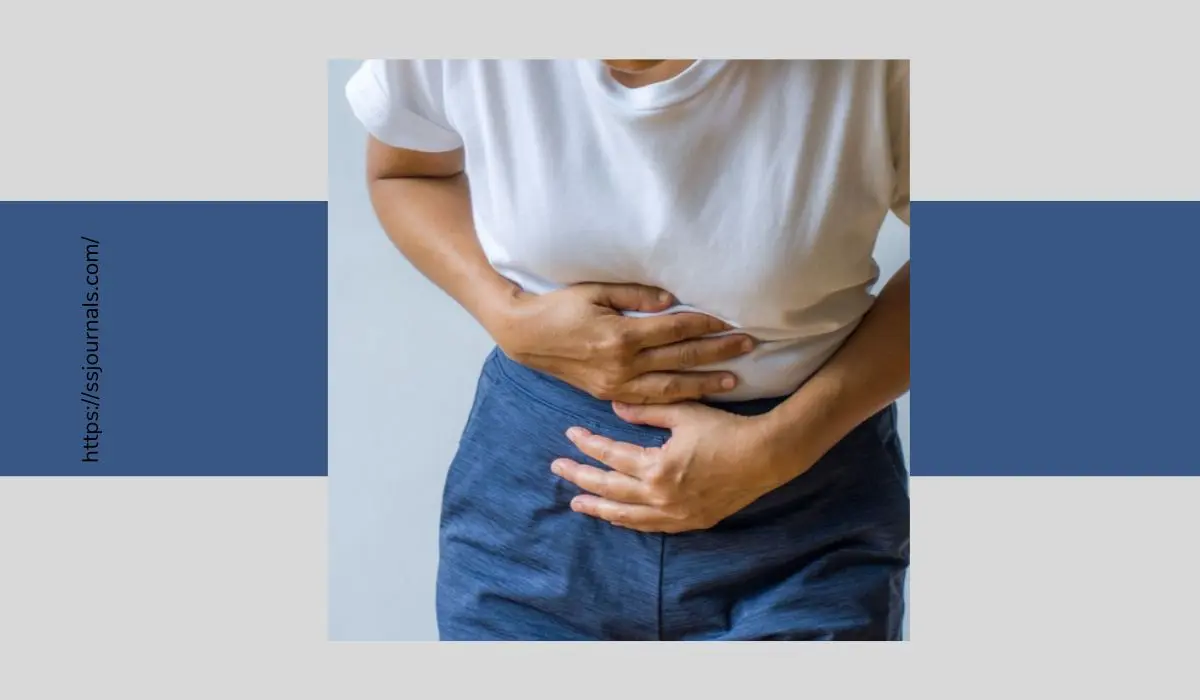Carrying extra weight around your midsection is not just an aesthetic issue – it’s a health concern. Belly fat, also called visceral fat, is the most dangerous type of fat in the body. Research shows it’s closely tied to conditions like heart disease, diabetes, dementia and some cancers.
With increasing rates of belly fat, scientists are investigating potential contributing factors. Emerging research suggests a compelling link between gut health and belly fat. Optimizing your gut microbiome may be key to burning stubborn belly fat and reducing associated health risks.
In this article, we’ll dive into the connections between your GI tract and belly fat. You’ll learn what fuels visceral fat accumulation, the role of the gut microbiome, and lifestyle strategies to improve gut health and slim your middle.
What Is Belly Fat?
Belly fat, clinically known as central adiposity, refers to accumulated fat surrounding the abdomen and vital organs. It’s measured by waist circumference.

Visceral fat lies deeper inside, surrounding the liver, intestines, and other organs. It’s metabolically active, releasing hormones and inflammatory compounds.
Subcutaneous fat resides just under the skin giving the belly its outward shape. This surface fat can be pinched.
While subcutaneous fat poses some long-term health risks, visceral belly fat contributes to chronic low-grade inflammation, insulin resistance, cardiovascular damage, and more.
Dangers Of Belly Fat
Also called abdominal obesity, excess belly fat is linked to:
➜ Type 2 diabetes – Fat around the abdomen contributes to insulin resistance.
➜ Heart disease – Fat deposits narrow arteries and raise blood pressure.
➜ Dementia – Inflammation damages brain tissue and connections.
➜ Liver disease – Fatty liver disease leads to permanent damage over time.
➜ Colorectal cancer – Hormones secreted by fat fuel tumor growth.
➜ Sleep apnea – Fat deposits constrict airways causing sleep interruptions.
➜ Depression – Inflammatory signals from fat alter mood regulation.
➜ Overall mortality – People with excess visceral fat have shorter lifespans.
Given the health implications, maintaining a healthy waist size is critical. Women should aim for under 35 inches and men under 40 inches. If overweight, prioritize losing belly fat even before the number on the scale changes.
What Causes Belly Fat?
Several factors influence the accumulation of stubborn belly fat:
Hormones
🔹 Cortisol – High chronic stress boosts cortisol which deposits abdominal fat.
🔹 Insulin – Constant blood sugar spikes make insulin less effective at storing fat evenly.
🔹 Estrogen – Declining estrogen in menopause leads to increased belly fat in women.
Diet
🔹 Sugar and refined carbs – These calories are preferentially stored as visceral fat.
🔹 Trans fats – Found in processed foods and linked to abdominal obesity.
🔹 Alcohol – Alcohol calories get deposited as belly fat.
🔹 Low protein – Inadequate protein increases hunger hormones and belly fat genes.
Lifestyle
🔹 Inactivity – Sedentary lifestyles cause fat to settle around the middle.
🔹 Sleep deprivation – Disrupts hunger hormones increasing belly fat.
🔹 Stress – Chronic stress elevates cortisol and visceral fat.
🔹 Smoking – A proven risk factor for abdominal obesity.
Genetics and sex
🔹 Men tend to carry fat in the abdomen more than women.
🔹 Genetics can predispose people to store fat viscerally.
Aging
🔹 Hormone changes and slowing metabolism with age promote belly fat.
The Gut Microbiome And Belly Fat
Emerging research demonstrates that gut health also plays a pivotal role in the accumulation of stubborn belly fat.
The gut microbiome refers to the trillions of diverse bacteria and other microbes that live symbiotically in your intestinal tract. These microorganisms impact many aspects of health. The makeup of the gut microbiota can determine the propensity for weight gain and obesity.
Studies reveal that people with excess visceral fat have an imbalance in their gut microbiome called “dysbiosis.” Certain species of bacteria are over-represented while beneficial species are lacking.
The gut microbiota influences belly fat in a few key ways:
Appetite and calorie absorption
The gut microbiome affects levels of appetite hormones like ghrelin and leptin. It also impacts how many calories you absorb from food. An unhealthy gut microbiome encourages overeating and efficient calorie uptake.
Blood sugar regulation
Imbalanced gut bacteria promote insulin resistance, high blood sugar, and compensatory insulin secretion. This exacerbates belly fat accumulation.
Inflammation
An unhealthy microbiome creates a state of chronic low-grade inflammation in the body through various biological signaling pathways. This process favors belly fat deposition.
Short-chain fatty acid production
Healthy gut microbes produce beneficial SCFAs from fiber that regulate metabolism. Dysbiosis impairs this process, disrupting fat burning mechanisms.
Bile acid metabolism
Altered bile acid profiles from gut dysbiosis promote weight gain and visceral fat accumulation.
Optimizing your gut microbiome through diet, lifestyle, and targeted probiotics can help reverse dysbiosis. This facilitates healthy appetite signals, blood sugar balance, and anti-inflammatory effects so your body releases belly fat.
Lifestyle Strategies To Improve Gut Health
Here are effective ways to improve your gut microbiome which can reduce stubborn belly fat:
Eat more fermented foods like yogurt, kefir, sauerkraut, kimchi, miso, tempeh, and kombucha. These contain probiotics.
Take a high quality probiotic supplement with diverse strains like lactobacillus and bifidobacterium.
Eat plenty of high fiber foods like vegetables, berries, nuts, seeds, and beans to feed beneficial bacteria.
Stay well hydrated with water throughout the day. Proper hydration aids digestion.
Reduce sugar intake including refined carbs like pastries, soda, candy, and white breads which promote dysbiosis.
Eat prebiotic foods like onions, garlic, bananas, and asparagus to support probiotic growth.
Consume fermentable fibers like inulin, pectin, and resistant starch to create SCFAs that nourish your microbiome.
Limit processed foods, artificial sweeteners, and food additives which disrupt gut balance.
De-stress and get enough sleep to keep hormones balanced. Chronic stress damages gut bacteria.
Take digestive enzymes to support breakdown of food for better microbiome nutrition.
Stay active with regular exercise but avoid excessive activity which raises stress hormones.
Quit smoking and avoid secondhand smoke which alters intestinal flora.
Talk to your doctor about microbiome testing to personalize your gut health plan. Consider probiotics, prebiotics or herbs to restore balance.
Target Belly Fat with Exercise
Along with optimizing your gut microbiome through diet and lifestyle, be sure to target belly fat through exercise:
- Perform a mix of sustained moderate aerobic activity along with high-intensity interval training (HIIT).
- Add more core training like planks, crunches, and other stabilizing moves which build abdominal muscle under the fat.
- Lift weights and use targeted resistance machines to retain and build calorie-burning lean muscle mass.
- Do activities with rotation, flexion and anti-lateral movement like swimming, boxing, tennis, golf and baseball.
- Stand and walk more during the day and contract your abs periodically.
- Try targeted belly fat burning machines and classes at the gym. Change up your routine.
Other Tips For Losing Belly Fat
Here are some other quick tips to help accelerate belly fat loss:
- Measure your waist weekly as it’s a better marker of visceral fat than weight.
- Eat more monounsaturated fatty acids found in olive oil, avocados and nuts.
- Limit alcohol intake which gets readily stored as visceral fat.
- Manage stress levels with yoga, meditation, massage and other relaxing activities.
- Get 7-8 hours of quality sleep nightly for optimal hormone regulation.
- Consider weight loss supplements like green tea extract, konjac fiber and alpha-lipoic acid.
Be patient – belly fat accumulates over years so expect reducing it to take time with consistency. Follow an overall healthy lifestyle along with targeted abdominal exercises and you’ll start seeing results within a few months.
Conclusion
A healthy gut microbiome plays an important role in reducing accumulated belly fat associated with poor metabolic health. Along with diet, exercise, and lifestyle changes, optimizing your gut flora can help you lose inches around your midsection and provide lasting weight loss effects.
Focus on whole foods, stress relief, proper sleep, targeted exercise, and proven gut-health-boosting habits. With patience and consistency, you can improve gut health, burn stubborn belly fat, and reduce obesity-related disease risks.

